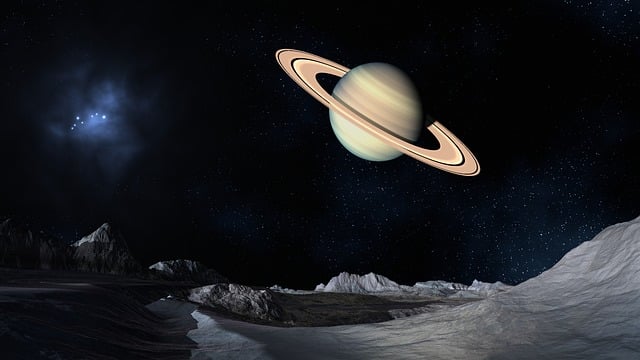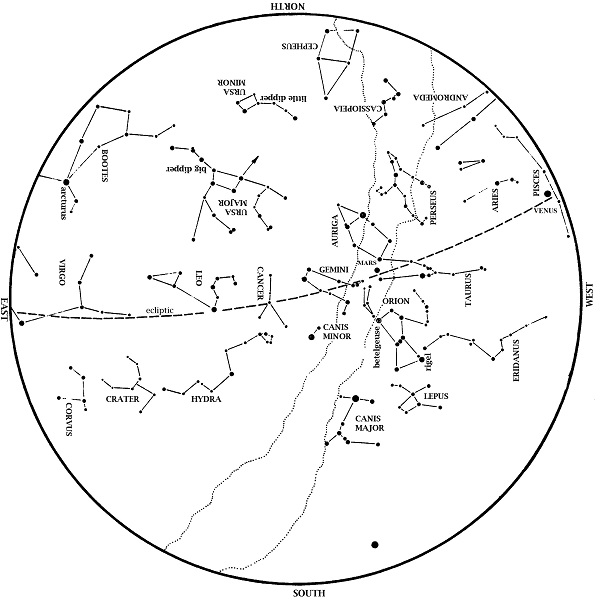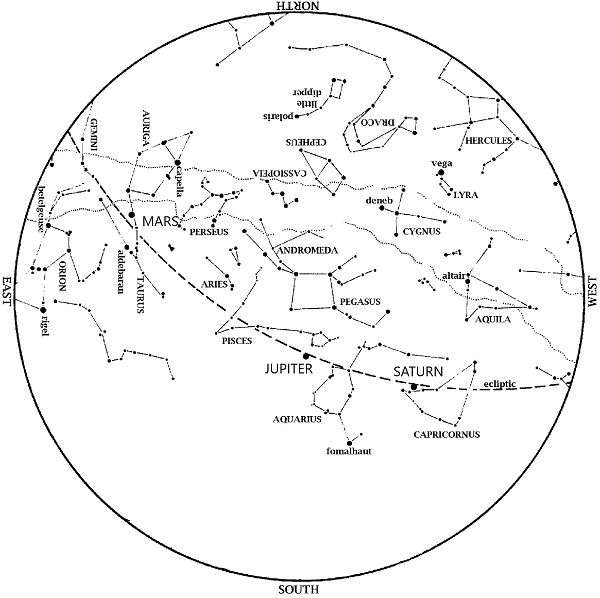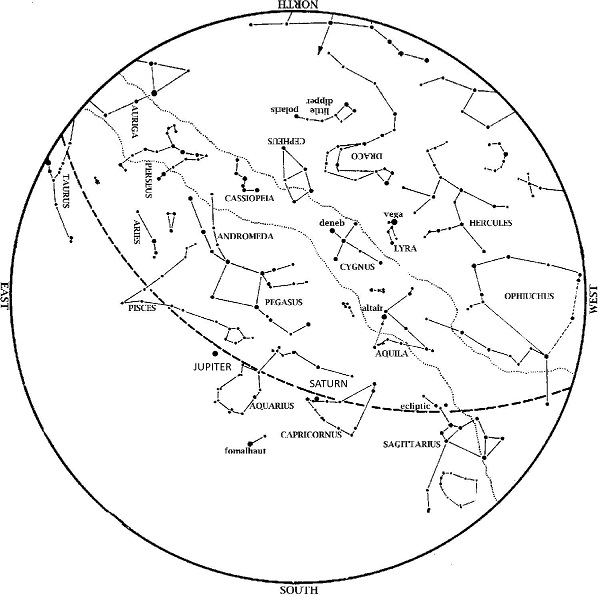Saturn is now in the southwestern sky at dusk. It outshines the stars around it, so it’s also easy to see. By Halloween night, however, Saturn sets in twilight; it drops into the Sun’s glare next month.
Venus, Mars, and Jupiter will come close together in the sky late this month. Right now, the three planets are almost in a vertical line, with Venus, Jupiter on the bottom, and Mars in between. Venus is brighter than Jupiter and both outshine all stars we ever see at night, so they’re easy to find even in twilight. Mars is much, much dimmer than those two. It is now just below (and slightly dimmer than) the star Regulus in Leo. During this month, watch as Mars gains on Jupiter and Venus gains on them both. Mars overtakes Jupiter Oct. 17, when they are just 0.38 degrees apart. By way of comparison, your pinky held at arm’s length blocks about one degree. Venus then passes one degree from Jupiter Oct. 26. That morning, the three planets form the most compact alignment, fitting within a circle 3.35 degrees across. Venus goes on to overtake Mars the morning of Nov. 3. They are 0.68 degrees apart that morning.
The Big Dipper is left of the North Star, with its handle pointing up. From that handle, you can ‘arc to Arcturus’ in the west at dusk.
Autumn represents sort of an ‘intermission’ in the sky, with bright summer stars setting at dusk, while bright winter patterns such as Orion have not yet risen. The ‘teapot’ of Sagittarius sets in the southwest early in the evening. The Summer Triangle is high in the west. Meanwhile, the Great Square of Pegasus is in the east, indicating that autumn has begun. The stars rising in the east are much dimmer than those overhead and in the southwest because when you face east at dusk in October, you face out of the Milky Way plane. The center of our galaxy lies between Scorpius and Sagittarius, while the Summer Triangle is also in the galactic plane. Pegasus, on the other hand, is outside the plane of our galaxy and is a good place to look for other galaxies. Nearby constellations Andromeda and Triangulum (a small triangle) contain the spiral galaxies nearest to our own.
Moon Phases in October 2015:
Last Quarter: Oct. 4, 4:06 p.m.
New: Oct. 12, 7:06 p.m.
1st Quarter: Oct. 20, 3:31 p.m.
Full: Oct. 27, 7:05 p.m.
Our annual Astronomy Day at the George Observatory is Saturday, Oct. 24! On Astronomy Day, we have activities from 3 to 10 p.m., and all of the telescopes, even the ones that normally cost $5 to look through, are free. It’s the biggest astronomy event in southeast Texas! Click here for more information.
Halloween is on Saturday this year, which means that the next day, Nov. 1, is the first Sunday of November. Therefore, Daylight Saving Time ends and we ‘fall back’ to standard time at 2 a.m. that morning. (The time goes from 1:59 a.m. back to 1 a.m., giving us the 1 a.m. hour twice.) So get your #ChillsAtHMNS, don’t forget to set your clocks back, and enjoy your extra hour of sleep Halloween night!
On most clear Saturday nights at the George Observatory, you can hear me do live star tours on the observation deck with a green laser pointer. If you’re there, listen for my announcement.
Clear Skies!









